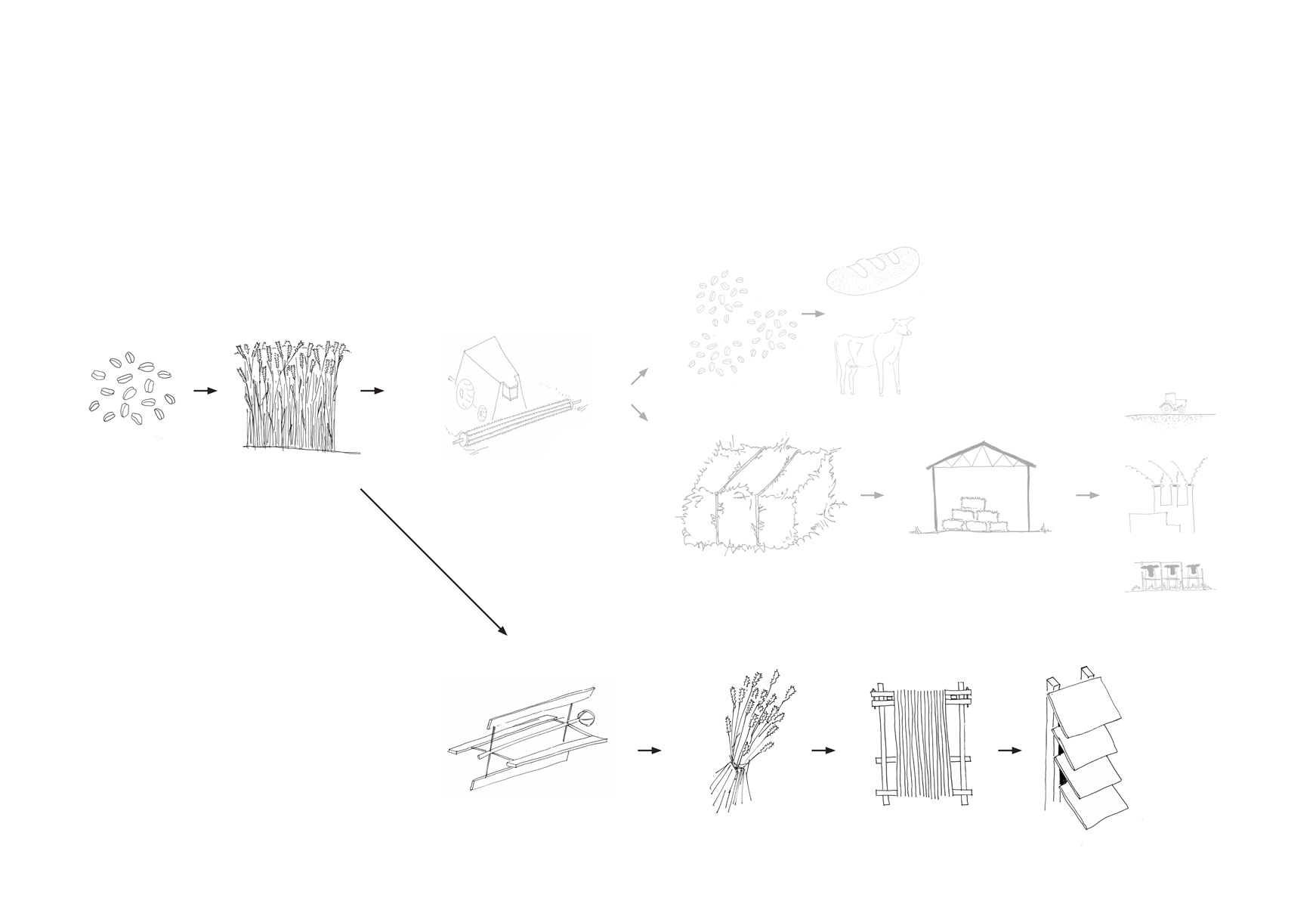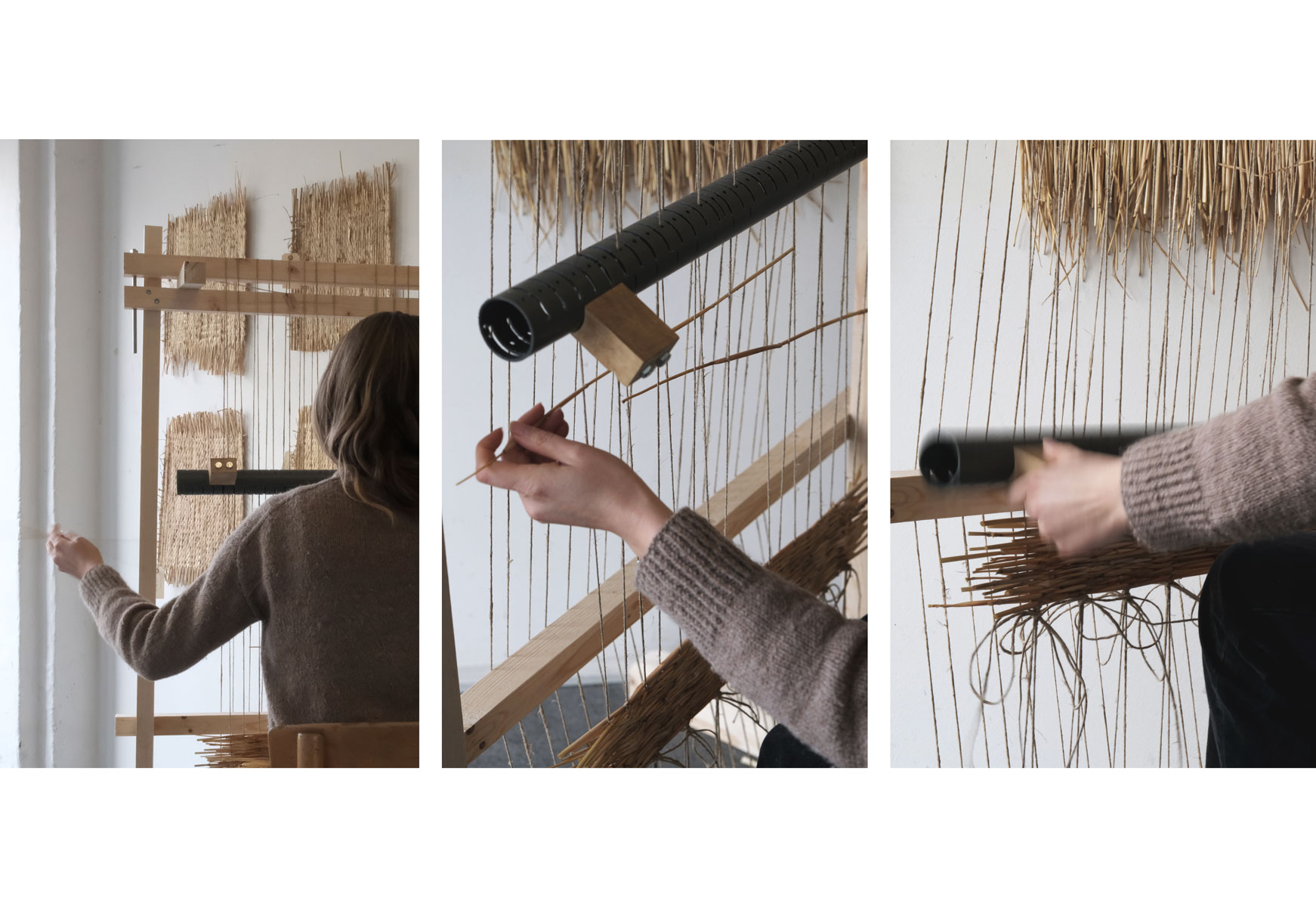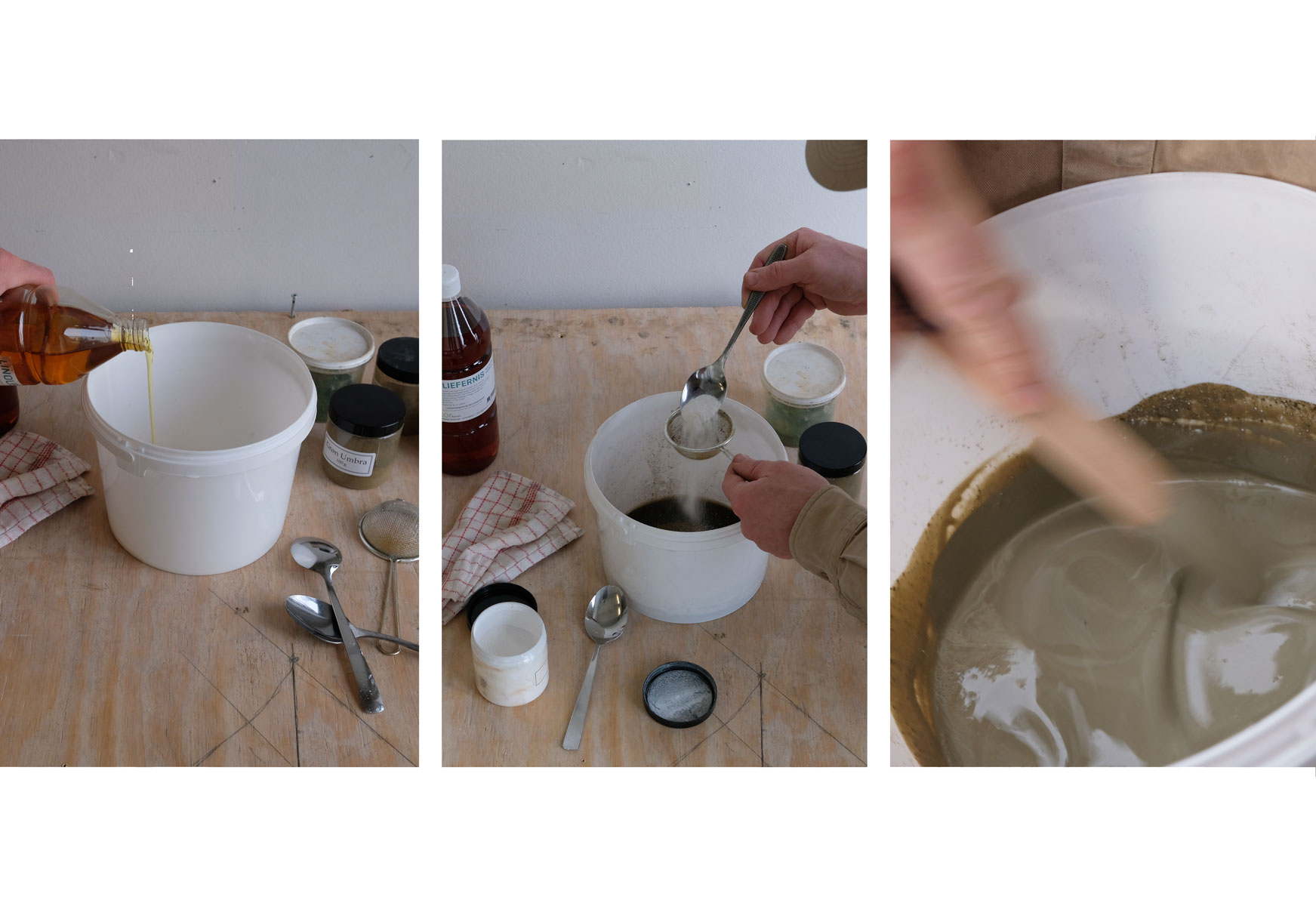2O23 | Textile Tectonics
This project examines the potential of the residual product straw as facade cladding. The focus is to refine the material through artisanal processing.
It is a necessity that the architectural profession and construction as a whole move towards a future of absolute sustainability. We must relearn how to build with renewable and biogenic materials. Plant-based materials consist of approximately 50 percent stored CO2, which is absorbed from the atmosphere and embedded in the material.
To answer this problem with a new architectural statement, we have developed a compostable facade cladding based around a wood framed panel, a woven straw covering and impregnated in hydrophobic linseed oil.
About 60 percent of Denmark consists of cultivated land and grain is grown in the majority of it. A residual product of grain production is straw, which is pressed into straw bales and in many cases ends up being burned at thermal power plants. This project intended to enter the grain production value chain earlier and look at the straw as a valuable resource with an architectural potential.
It has been an important part of the project to arrive at a product that will be able to fit in with conventional, standardised construction. Here, parameters such as workflows, assembly and interchangeability have been decisive for the design process.
The facade system is designed based on a principle of design for disassembly. The textile properties of the weave and the flexible assembly make it easy to replace panels in vulnerable areas.
This 6 week research and innovation project was made together with Stinus Bertelsen, Lui Fisher and Frederik Janum Friis during our 3rd semester of masters.









